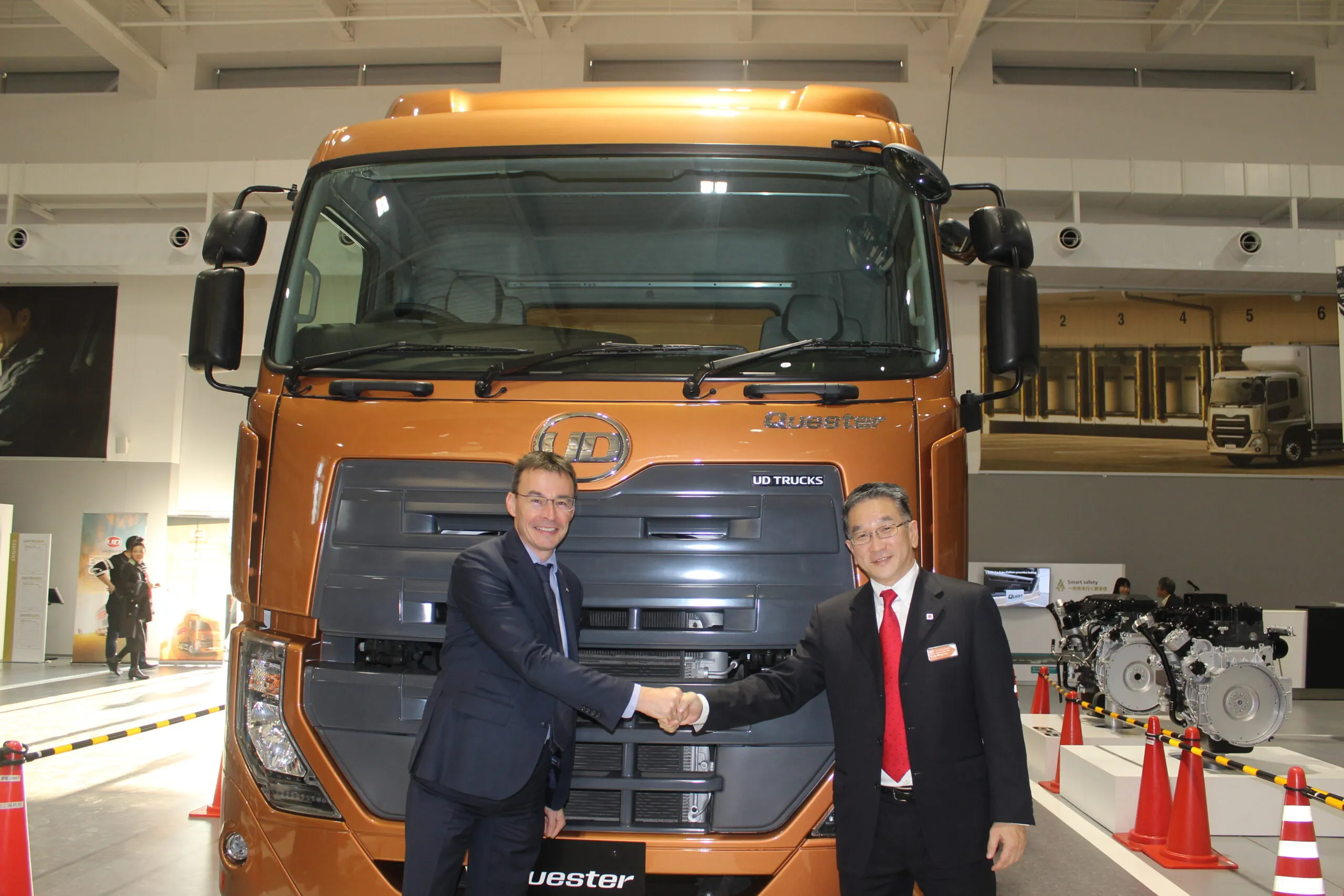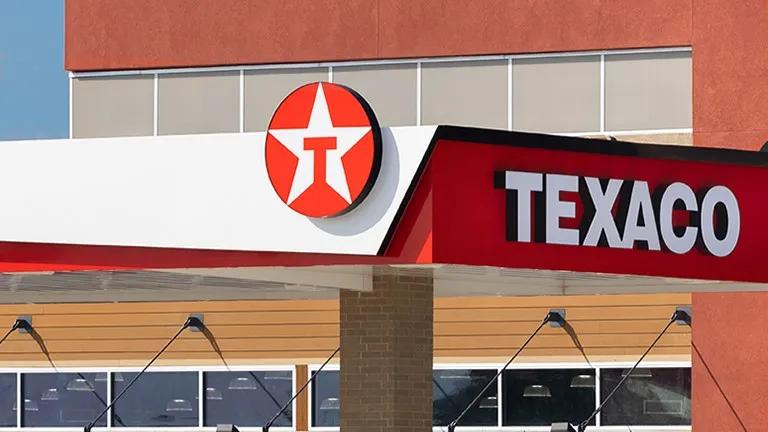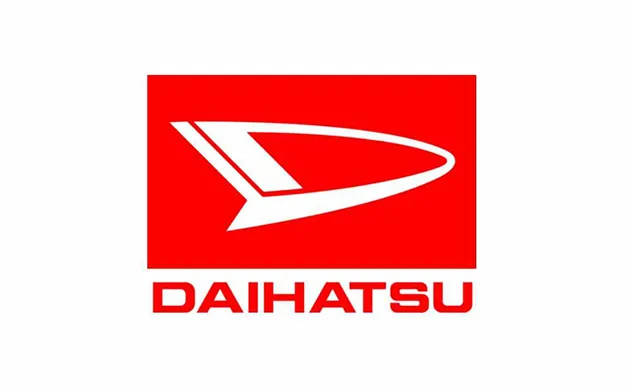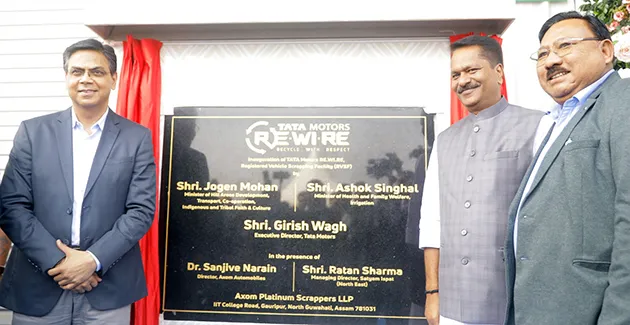Truck & Bus News and a group of invited media had a face-to-face discussion with a panel consisting of UD Trucks Group Truck Asia Sales Malaysia Managing Director Filip Van den Heede, Tan Chong Industrial Equipment (TCIE) Executive Director Tan Keng Meng, UD Trucks Corporation Vice President for UD Brand and Marketing Communications Kenneth Hagas, Vice President for Product Line Management Toshi Odawara and Vice President for Product Offer UD Trucks Brand & Product Taizo Matsuo. Held at the UD Experience Centre, UD Headquarters in Ageo, Japan, the discussion touched on the uniqueness and expertise of UD Trucks, its product development, technology breakthroughs and challenges. The interesting part, of course, was how the above were adapted for market trends and customers’ needs.
UD Trucks Unites Three Worlds to Meet Customer Needs
A flashback to 2017, one could see UD Trucks, together with its long standing partner TCIE, jointly launching the Croner, an all-new medium duty truck in August, to complement the Quester heavy-duty range that was rolled out in 2013. Next to the Croner launch was the introduction of new services such as UD Telematics and UD financial services.
“The Quester is very strong in the construction segment and now it has gradually penetrated into the long haul and regional haul of local distribution, next to general cargo. For the Croner, we are targeting the construction and agricultural segments, especially palm oil. These two products fit the needs of Malaysian customers. However, for us innovation is a commitment not only to deliver the trucks the world needs today, but also the services such as UD Telematics, financial services, driver training, after-sales support, among others, ” said Van den Heede.
It was unlike many truck manufacturers in that when they designed a truck, they designed it for a specific market and then after 2 years, they introduced it to other markets. To suit those markets, they normally made compromises, taking away certain features and adding others. The uniqueness of UD Trucks, Hagas stressed, was that it developed specific product lines for the growth market from the beginning.
“Gemba or ‘real place’ spirit is in UD’s DNA; it has been there since the birth of the company. We are a challenger; we started our R&D journey about 10 years ago. We go to our customers in each market to find out what are the essentials. We build the vehicle and test it on the road in the growth market. We combine the best of three worlds — UD Trucks’ Japanese heritage and craftsmanship, together with the technology and safety principle from the Volvo Group, and the local knowledge and resources of customer care and support to live up to our vision of making the truck and services that the world needs today. Now, we have developed a wide range to meet the different market needs and applications.”
Driveability is the biggest challenge
According to Hagas, there were several trends; firstly it was about business efficiency. Globally, the trucking industry was facing intense competition. It was relatively easy to set up a trucking company but one needed to look into the business, transport and cost efficiency for the customers. Secondly, the demand from society was increasing all over the world from different levels, such as safety and environment. Thirdly, it was driver shortage and skill driving as well as the perception that a truck was hard to drive. He pointed out that in Japan, the average age of drivers was between 50 and 60 years old, and only 2 per cent of truck drivers were women. Malaysia, he said, faced the same problem; the drivers were aging and it was hard to find good drivers.
“Driveability is today’s biggest challenge. We constantly look into our offerings to see how we could help to make driving easier and friendly. For instance, we introduced the ESCOT-V, an electronically controlled automatic transmission that is the industry benchmark. It eases operability, reduces levels of stress and fatigue while driving, making our heavy-duty trucks feel like a passenger car to drive, and contributes to driver safety. We provide driver training, organise UD Trucks Extra Mile Challenge (UDEMC) to upgrade the skills of drivers and address the issue of driver shortage.”
The truck driver training is conducted by TCIE in Malaysia. Tan explained that there were different levels of training; for instant, basic driver training to help drivers familiarise with the UD truck, technical and emergency techniques training as well as how to take care of the truck. The training could be held in TCIE or the customer’s premises.
“Driveability for us is a technology that we want to promote. We even encourage the truck owner’s wife to test drive the vehicle. You would see how surprised they are to find out that driving a truck is not as hard as what they have imagined it to be; it is as easy as driving a car,” added Tan.
Comparing the brand with others, Tan said UD trucks had the best from the three worlds. As the sole distributor of UD trucks in Malaysia, TCIE was at the ‘gemba’ stage, handling sales and after-sales services for UD. “We work closely with UD Trucks to ensure the best customer satisfaction and the lowest Total Cost of Ownership (TCO). We encourage customers to take up the maintenance service contract and the technology – UD Telematics – for total peace of mind.”
UD Telematics
Launched in August last year with the medium-duty Croner series, UD Telematics is a remote monitoring system that keeps the operators updated on the status of their entire fleet in real time.
With UD Telematics, Van den Heede pointed out that the operator could keep sight of their trucks and location in real time, and address maintenance needs to reduce unplanned stops. It ensures consistent fuel saving and reduces operational cost and better fleet management to improve efficiency and increase productivity.
“In the UDEMC global final, you could see that there is 15 to 20 per cent variance on the competency level between the best and worst driver in the same category, even though they are the best driver from their respective country. That is why we want to stay close to our customers and help them manage their operational cost.”
Furthermore, the easy-to-read reports on fuel usage of each truck and driver generated by UD Telematics were very useful. Apart from allowing the owner to reward their good drivers, the system was equally beneficial in convincing drivers to change their driving style and behaviour. By identifying areas for potential improvement through better driving techniques, the overall fleet fuel efficiency could be improved, lowering overall costs. However, he stressed that telematics alone was not enough as it had to complement with driver training to achieve a fruitful result.
“Although our telematics system is developed for UD trucks, we also look at our competitor’s vehicle so that we can obtain other data in our complete portal. For selective customers, if we really see the need to integrate other brands of vehicles, we can do that,” he added.
Currently, UD Telematics come standard in some models for certain markets. However, Hagas said the company was the first to introduce telematics in Japan. Since 2010, every Quon was equipped with UD Telematics and currently, it has a running population of 50,000 units. In Malaysia, Tan confirmed that it was a standard fitment for both Quester and Croner models.
TCIE aims for two-digit increase in sales
Regarding market response to the newly-launched Croner, Tan said it was a successful launch and customers were asking for more trucks. He revealed that TCIE was looking at a double-digit increase in sales this year. “We are pretty well spread out in sales outlets and service centres. At the moment, we have 29 sales outlets and 43 service centres across Malaysia. This year, we will concentrate on upgrading the existing service capability and enhancing customer comfort and satisfaction.”
Tan also announced that TCIE would set up an assembly facility for UD Quester and Croner models in Segambut in April 2018.
Despite the market slowdown in 2017, Tan and Van den Heede are optimistic about the Malaysian market. Tan said from the newly announced 2018 budget, there would be plenty of opportunities in the construction industry, housing projects such as the 1Malaysia People’s Housing Programme (PRIMA), and infrastructure projects such as the East Coast Expressway, Pan Borneo among others, which would spur the construction industry in Malaysia and stimulate economic growth. With the Malaysian middle class continuing to expand and enjoy shopping in malls or online, it also helped to increase the logistics and cold-chain needs.
“Together with our long-standing partner TCIE, we are keen on exploring opportunities in the Pan Borneo project. We are also closely monitoring the potential of an open border across Asean up to China. Malaysia is right in the middle of this open border potential. UD Trucks and TCIE would like to be a part of it as Malaysia is our home and we have the network, not only in this country but also in Singapore,” concluded Van den Heede.








